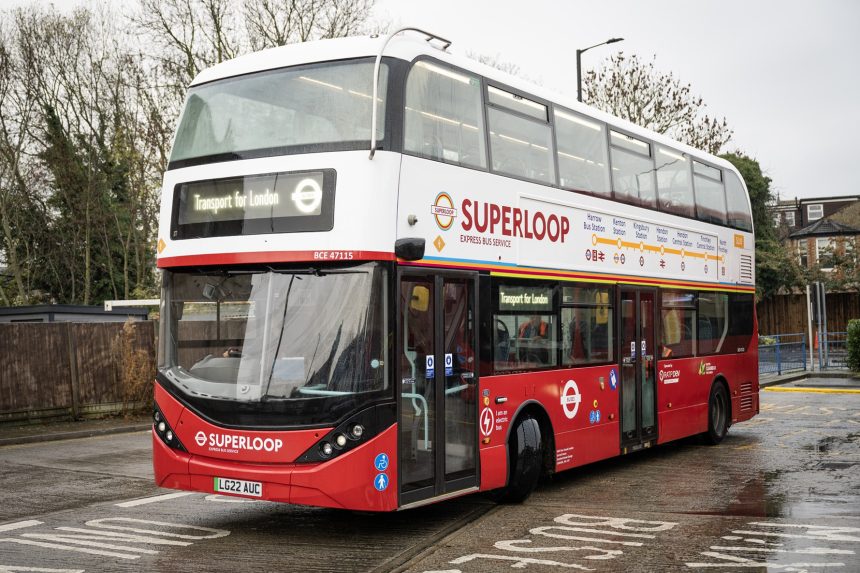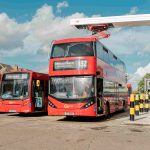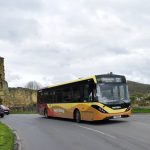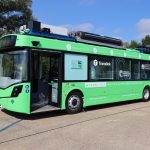Weekday patronage growth of up to 62% has been recorded on Superloop bus routes in the capital, Transport for London (TfL) has said.
That figure is from the SL7 between Heathrow and West Croydon, run by Go-Ahead London. It was formerly route X26 and became SL7 on 19 August with a doubling in frequency to every 15 minutes. The growth was measured October and is compared to the X26 in June, although TfL says that all Superloop services introduced so far have seen demand increase above the network average level.
Of others, the SL8 in West London – which saw operating hours increase over its 607 predecessor – saw 15% usage growth over the same timeframe. SL6 (a non-radial service between Croydon and Russell Square) recorded a 16% uplift with an unchanged service level, while the SL9 (between Heathrow and Harrow) delivered 3% growth on the same basis.
Introduced more recently was the SL10 between North Finchley and Harrow. It is operated by RATP Dev Transit London with battery-electric double-deckers.
On Saturday 9 December, the SL1 between North Finchley and Walthamstow Central will begin. It will be operated by Arriva London, which will also run the SL2 and the SL5 upon their introduction. Stagecoach London will similarly handle the forthcoming SL3.
TfL adds that the loop aspect of Superloop will be complete by spring 2024 as those three services begin. A final service, the SL4 – one of the three non-radial routes – will start in 2025 after completion of the Silvertown tunnel. It will be delivered by Go-Ahead London.
Speaking about the patronage uplift, TfL Director of Buses Louise Cheeseman notes that “the majority” of the Superloop network will be in place by Christmas. She says: “It is great to see that customers are benefitting from the Superloop.
“The express bus network was made with customers in mind, giving them quicker and more sustainable options when it comes to public transport in outer London.
“We are pleased to see that the Superloop services that are already part of the network are a firm favourite with those who need to get around the capital, and to be able to offer Londoners even more new instantly recognisable routes.”











